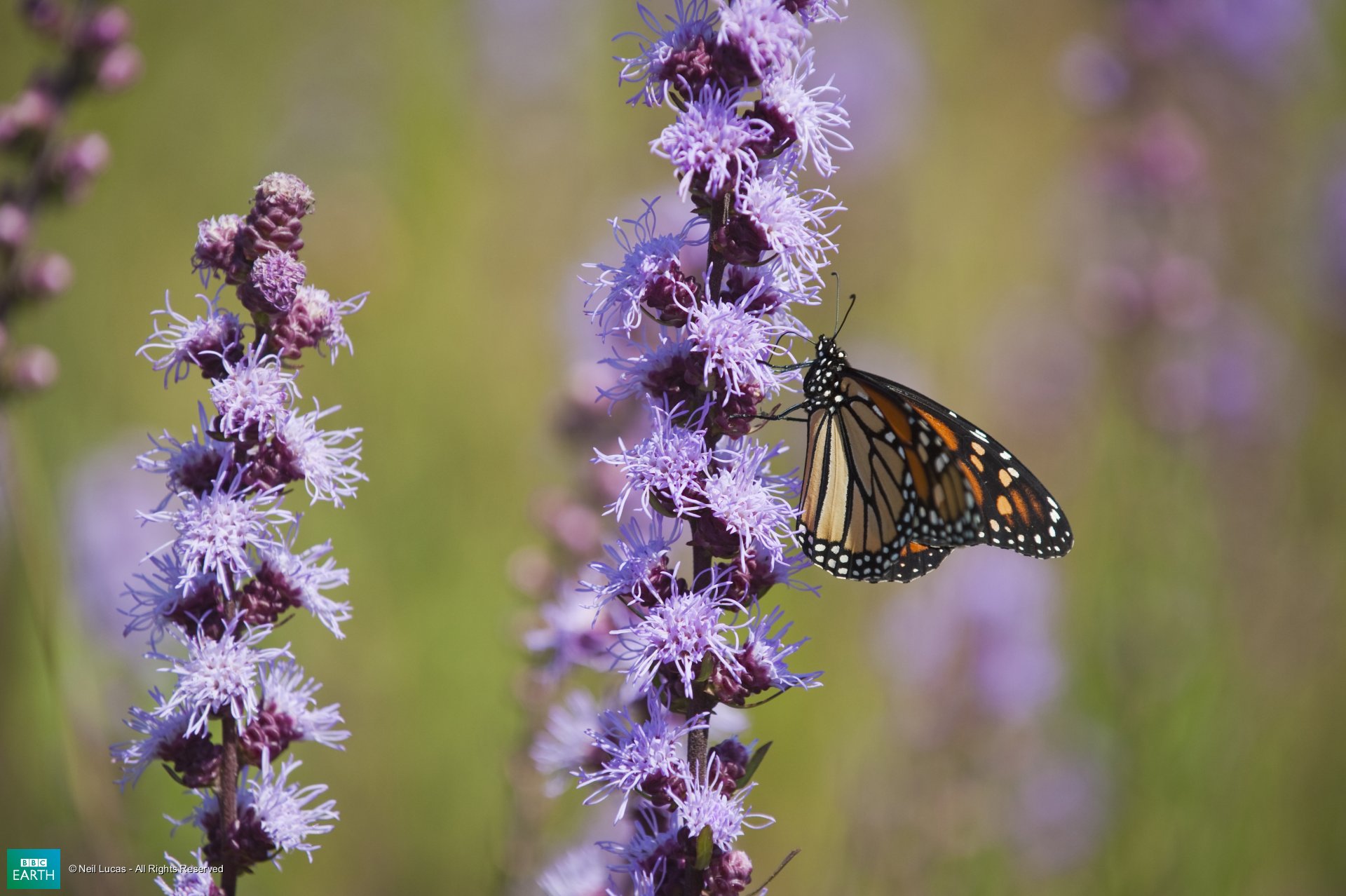Yes we can brood over the old definition where plants were described to be non-motile in comparison with animals, which is now null and is a thing of past. Unlike what we were told at our kindergartens, not only plants possess various movements like kinesis, tropism, taxis and nastic movements which are too slow for us to observe but some do possess rapid movements that surprise us and make us touch them time and over again. Here is a collection of 10 most beautiful plants with such rapid kinetic activities.
10. Orchidaceae
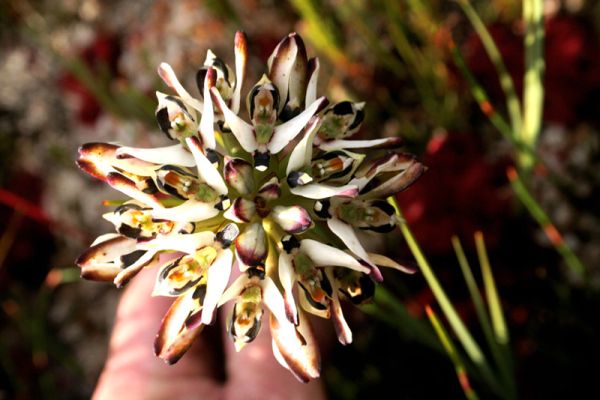
Fynbos
Orchidaceae, commonly referred to as the Orchid family, is a morphologically diverse and widespread family containing a number of beautiful dazzling flowering plants that possess rapid movement due to their strong highly specialized pollination behavior associated to them. Orchids generally have simple leaves with parallel veins but are well known for the many structural variations in their flowers. In orchids that produce pollinia, pollination happens as some variant of the following. When the pollinator enters into the flower, there are a series of contractions and relaxations as that of a muscle occurs with the flower seen by naked eye and similar activity occurs when the pollinator enters another flower thus pollinating it. The possessors of orchids may be able to reproduce the process with a pencil, small paintbrush, or other similar device.
9. Witch Hazel

WaxandBubbles
Witch-hazel (Hamamelis) are deciduous shrubs or (rarely) small trees growing to 3–8 m tall, rarely to 12 m tall. They are popular ornamental plants, grown for their clusters of rich yellow to orange-red flowers which begin to expand in the autumn as or slightly before the leaves fall, and continue throughout the winter. The horticultural name means “together with fruit”; its fruit, flowers, and next year’s leaf buds all appear on the branch simultaneously, a rarity among trees.H. virginiana flowers in the fall of the year. The flowers of the other species are produced on the leafless stems in winter, thus one alternative name for the plant, “Winterbloom”.Each flower has four slender strap-shaped petals 1–2 cm long, pale to dark yellow, orange, or red. The fruit is a two-part capsule 1 cm long, containing a single 5 mm glossy black seed in each of the two parts; the capsule splits explosively at maturity in the autumn about 8 months after flowering, ejecting the seeds with sufficient force to fly for distances of up to 10 m, thus another alternative name “Snapping Hazel”
8. Sandbox Tree
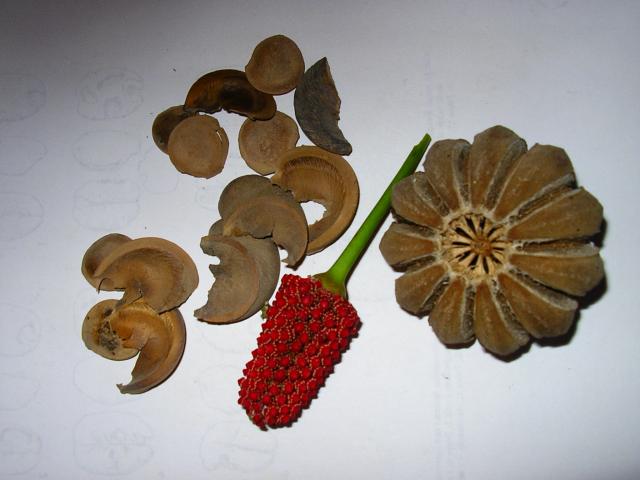
Rice
The Sandbox tree, also known as Possumwood and Jabillo, is an evergreen tree that can grow to 30 m. It is recognized by the many dark, pointed spines and smooth brown bark. These spines have caused it to be called Monkey no-climb. The red flowers have no petals. Male flowers grow on long spikes; female flowers are solitary in axils. The fruit is a large capsule with explosive dehiscence. When ripe, pods catapult the seeds as far as 100 meters (300 ft). It has also been known as the Dynamite tree, so named for the explosive sound of the ripe fruit as it splits into segments.
7. Triggerplant
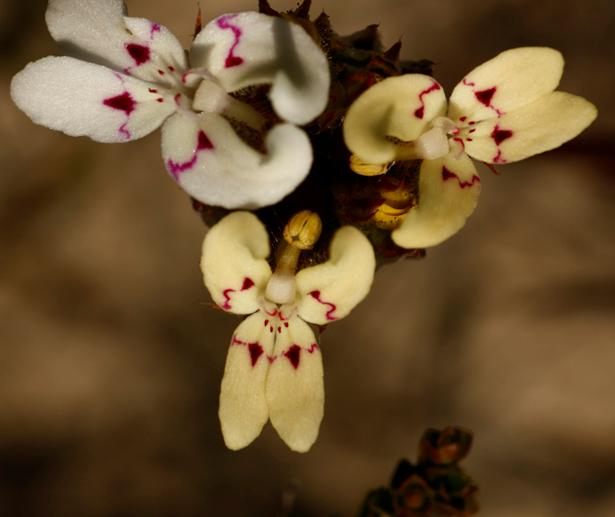
DeviantArt
Stylidium< (also known as triggerplants is a genus of plants that derive its name from Stylos, which refers to the distinctive reproductive structure that its flowers possess like a column or a pillar. Pollination is achieved through the use of the sensitive “trigger”, which comprises the male and female reproductive organs fused into a floral column that snaps forward quickly in response to touch, harmlessly covering the insect in pollen. They have beautiful flowers, and although species of the genus represent a very diverse selection of plants but most easily identified by their unique floral column, in which the stamen and style are fused. The column—also commonly called a “trigger” in this genus—typically resides beneath the plane of the flower.
6. Sensitive Partridge Pea

Healthy Home Gardening
Chamaecrista nictitans (Sensitive Partridge Pea, Small Partridge Pea or Wild Sensitive Plant) is a herbaceous species of legume widely distributed through the temperate and tropical Americas. It is an annual plant capable of rapid plant movement—its leaflets fold together when touched.
5. Catclaw Brier
IMAGE PENDING
The Catclaw Brier (Mimosa nuttallii), also known as the Sensitive Brier, is a herbaceous perennial legume. The ribbed stems of this plant usually grow to 4 ft. or more and are branched. Plants rarely reach more than 1-2 ft. in height. The frond-like leaves are alternate with prickly stalks. The tiny flowers occur in congested bunches. Before they open, they look much like small green bramble fruits. Other common names for this plant include Nuttall’s sensitive briar and Shame-boy, a reference to the sensitive foliage that closes upon touch.
4. Squirting Cucumber
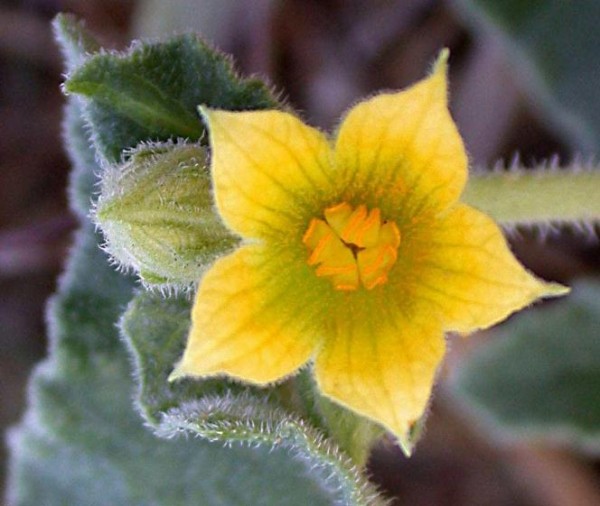
Wikimedia
Ecballium elaterium, also called the squirting cucumber or exploding cucumber, is a plant in the cucumber family. It gets its unusual name from the fact that, when ripe, it squirts a stream of mucilaginous liquid containing its seeds, which can be seen with the naked eye. It can move rapidly thus a rapid plant movement. It is native to Europe, northern Africa, and temperate areas of Asia. It is grown as an ornamental plant elsewhere, and in some places it has naturalized. It is suspected to provide food for the caterpillars. This plant, and especially its fruit, is poisonous. In the ancient world it saw use as an abortifacient. In Turkey, the fresh fruit juice of this plant is directly applied into the nostrils for the treatment of sinusitis as a herbal / folk remedy.
3. Impatiens

Wikipedia
Impatiens containing over a thousand species is a vibrant World of Busy Lizzies, Balsams, and touch-me-nots. Some species are annual plants and produce flowers from early summer until the first frost, while perennial species, found in milder climates, can flower all year. Regardless of their lifespan, the largest impatiens grow up to about 2 meters tall, but most are less than half as tall. The leaves are entire and shiny; their upperside has a thick, water-repellent cuticula that gives them a greasy feel. These plants derives their scientific name Impatiens and the common name “touch-me-not” in reference to their seed capsules. When the capsules mature, they “explode” when touched, sending seeds several meters away. This mechanism is also known as “explosive dehiscence”; thus having a rapid plant movement.
2. Venus Flytrap
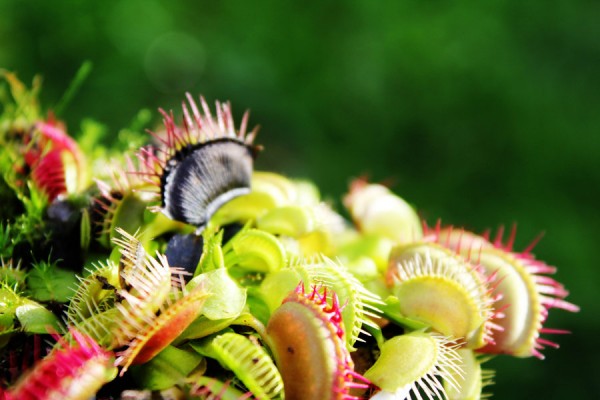
DeviantArt
The Venus Flytrap is a small plant whose structure can be described as a rosette of four to seven leaves, which arise from a short subterranean stem that is actually a bulb-like object. Each stem reaches a maximum size of about three to ten centimeters, depending on the time of year; longer leaves with robust traps are usually formed after flowering. The Venus Flytrap, Dionaea muscipula, is a carnivorous plant that catches and digests animal prey—mostly insects and arachnids. Its trapping structure is formed by the terminal portion of each of the plant’s leaves and is triggered by tiny hairs on their inner surfaces. When an insect or spider crawling along the leaves contacts a hair, the trap closes if a different hair is contacted within twenty seconds of the first strike. The requirement of redundant triggering in this mechanism serves as a safeguard against a waste of energy in trapping objects with no nutritional value.
1. Drosera
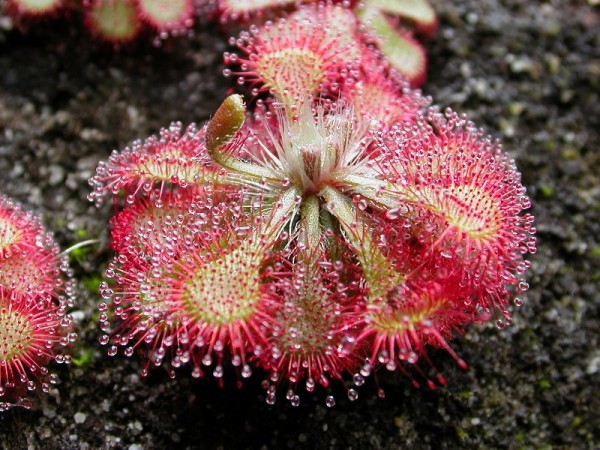
Wikipedia
Drosera, commonly known as the sundews, comprise one of the largest genera of carnivorous plants, with at least 188 species. Sundews are characterised by the glandular tentacles, topped with sticky secretions, that cover their laminae. All species of sundew are able to move their tentacles in response to contact with digestible prey. The tentacles are extremely sensitive and will bend toward the center of the leaf in order to bring the insect into contact with as many stalked glands as possible. According to Charles Darwin, the contact of the legs of a small gnat with a single tentacle is enough to induce this response. This response to touch is known as thigmonasty, and is quite rapid in most species. Sundews form prostrate or upright rosettes between 1 centimeter and 1 meter in height. Climbing species form scrambling stems which can reach much longer lengths. Sundews have been shown to be able to achieve a lifespan of 50 years. One important feature is although it has an aggressive carnivorous behavior, it doesn’t depend on it for nutrients at all, but derive them from soil.
